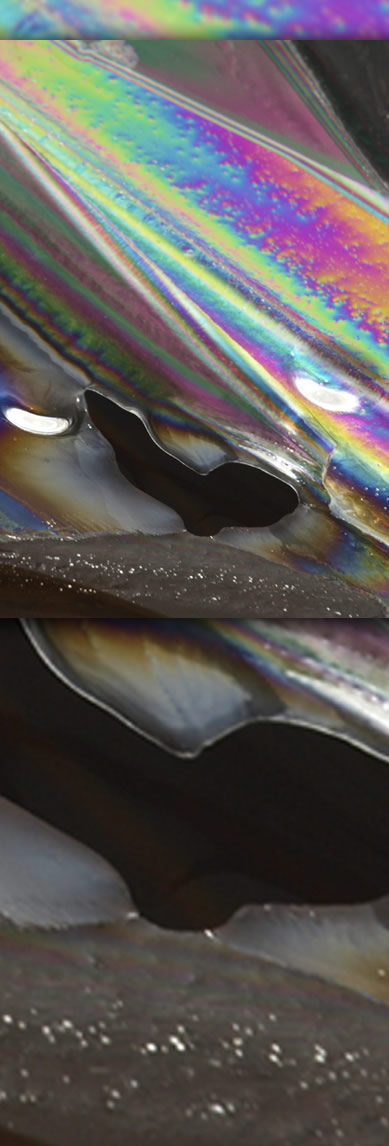Ice Colours
Imaged on a frozen pond December 20 by Andrew Kirk.
©Andrew Kirk, shown with permission.
When on winter walks take a polarizing filter with you - A camera filter or a lens from some old polarising sunglasses will do. View pieces of ice with the filter, adjusting the viewing angle as you do so. When colours are seen rotate the filter to see if they change.
Andrew Kirk imaged his on an overcast day using a single filter on the camera.
The colours are produced because ice is birefringent. Light entering or internally reflected is split into two polarised rays which have slightly different paths. When viewed with an external polariser the two rays interfere. Some colours are darkened leaving other hues shining brightly.
An air layer beneath an ice slab yields the brightest colours.
|






